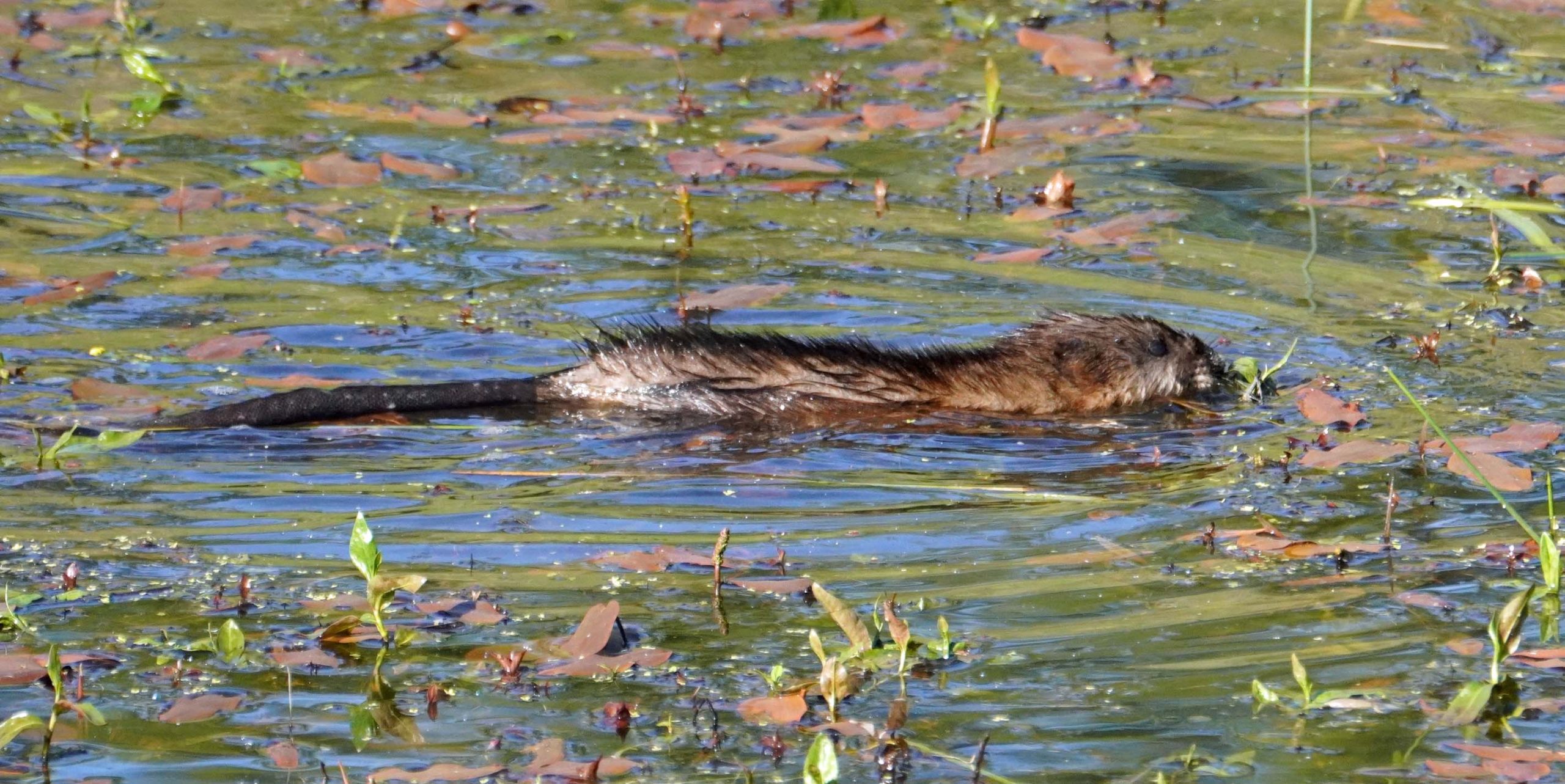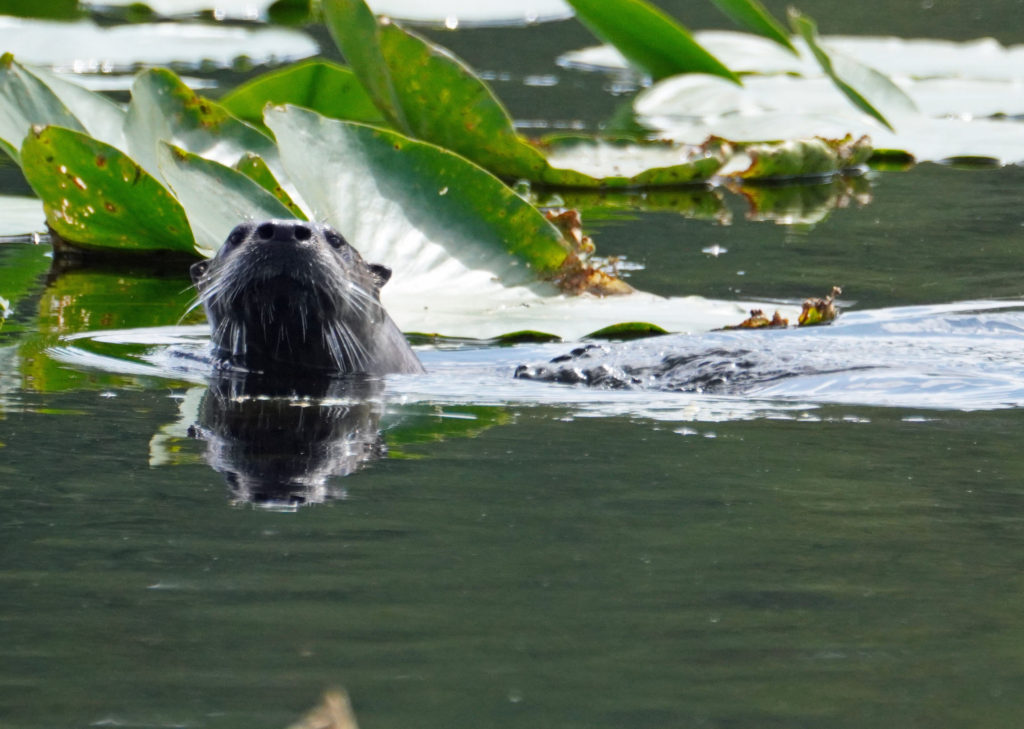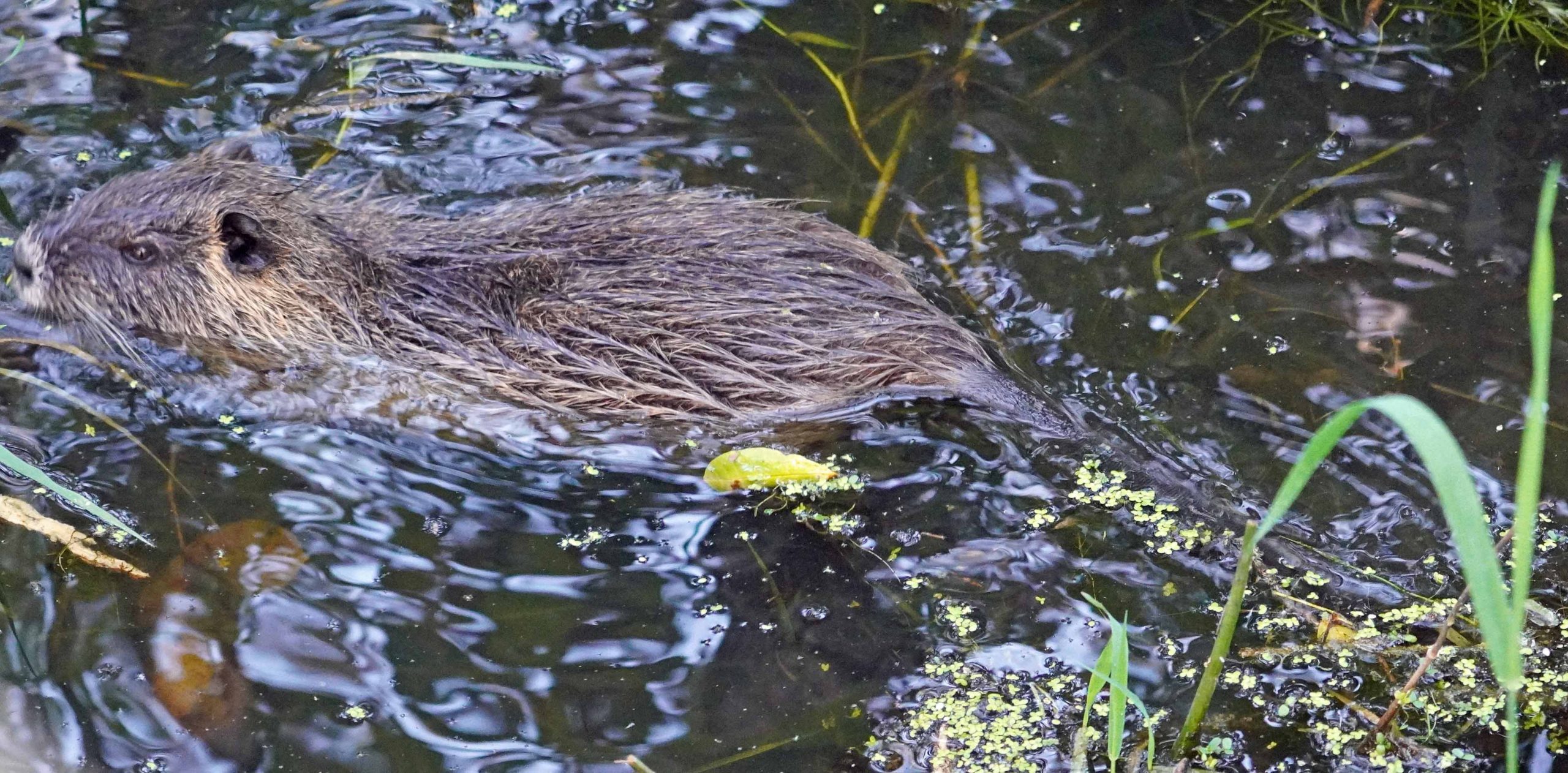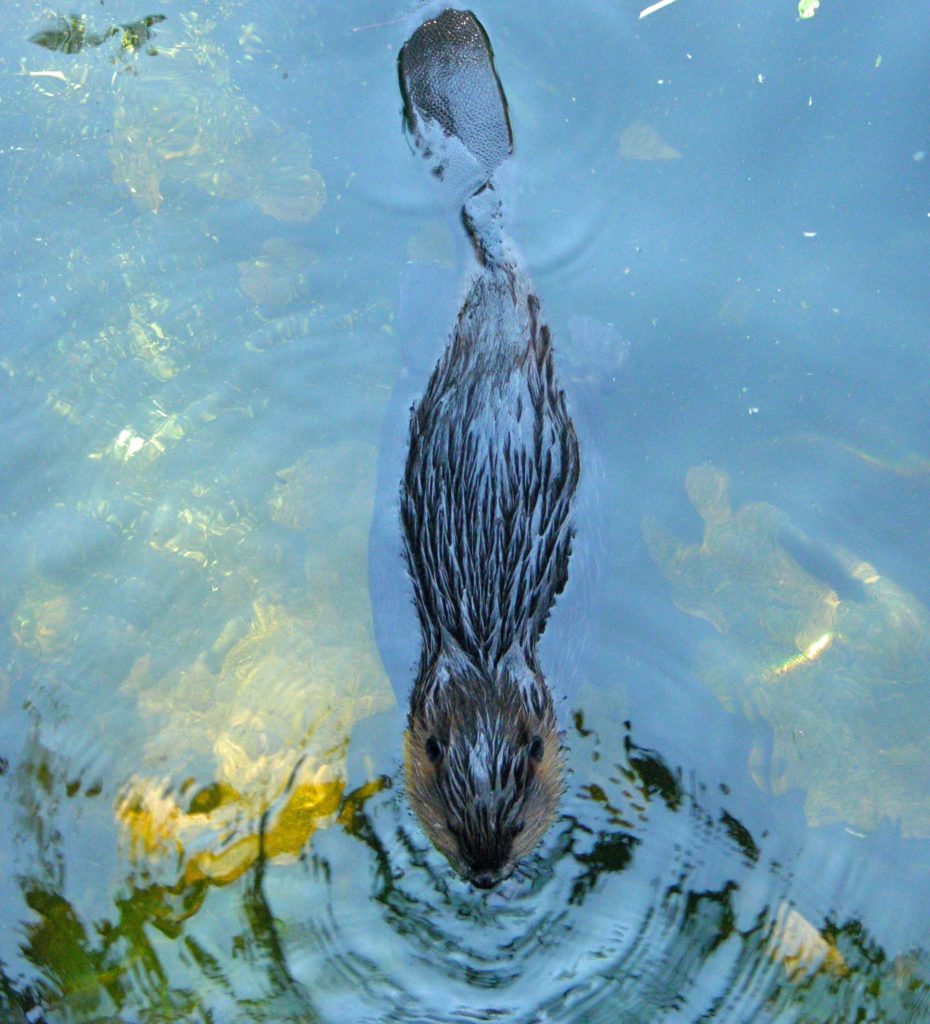Muskrats are energetic swimmers often stopping to gobble up aquatic plant; note the hairless, laterally flattened tail. Otters usually swim with their head up. Otters are predators preferring fish, frogs, crayfish or other similar sized prey. Ducks disappear when otters show up. Nutria often expose themselves from head to tail while swimming and display very prominent white whiskers. They eat aquatic and terrestrial vegetation. Then you see the obviously flattened, scaled tail of the beaver. (I got lucky with this shot out at Northwest Trek some time ago.) But if beavers are around it is hard to miss their assaults on the trees in their domain. For more on nutria go here: Nutria -Invasive Species Master on this website or just type in Nutria on the search space.
Often in ponds, streams, and rivers we see a swimming mammal that looks just like a what? The first instinct is to call it a beaver. But unless that sighting was very early in the morning or well into the evening that guess was probably wrong. You are much more likely to see a muskrat, otter, or nutria during the bright daylight hours. But even then, how can you tell the difference? Most wildlife resources point out the differences in the appearance and posture of their bodies and tails while swimming. Beavers have the obvious and famous flat tail which they tend to keep underwater when swimming while exposing their head, neck, and back. The much smaller muskrat exposes its body in the same manner but its small round tail sticks out. The nutria or coypu very much looks like a beaver when swimming due to its size but its rounded tail that sticks out of the water gives it away. River otters tend to swim with just their head above water and it has a much thicker tail than the nutria and muskrats. Head shape and whiskers are other identifiers. Just the same, these animals are difficult to differentiate at a quick glance. In my experience, behavior is another key. Beavers are just about nocturnal animals; your best chance there is to get up well before sunrise and head out to the water just as the sun begins to rise. Otters are out during the day but immediately pop back under water when frightened and stay there for a long time; enough to make you think it has disappeared. Muskrats get frightened by human appearances as well but do not stay underwater nearly as long as otters. They also like to munch on aquatic plants. The introduced nutrias I have observed seem less alarmed by humans. They also do not stay underwater for as long as otters and are noticeably much bigger than muskrats.
<
>





Leave a Reply
You must be logged in to post a comment.